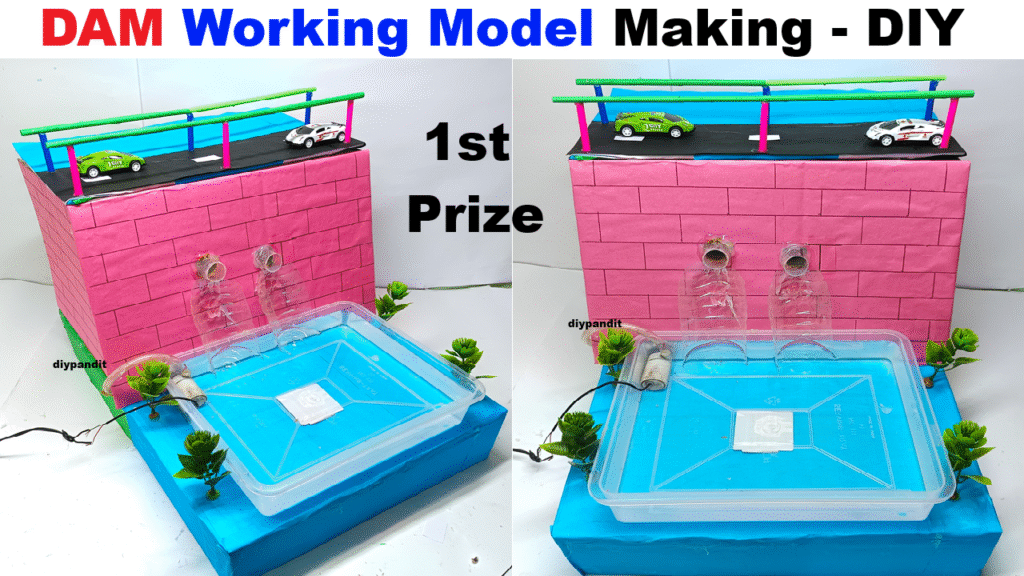Introduction
A water dam is a large wall or barrier built across a river to stop and store water. The water collected behind the dam forms a big lake called a reservoir. This stored water is very useful for people, farms, and industries.
Dams provide water for drinking, farming (irrigation), and factories. They also help in controlling floods, because the extra water during heavy rains is stored safely. Another big advantage of dams is that they can produce hydroelectric power. The flowing water from the dam moves turbines, which generate electricity without smoke or pollution. This makes dams an important source of renewable energy.
However, building dams also has some disadvantages. Large areas of land get flooded, and sometimes people and animals have to leave their homes. It can also affect fish and other river life.
In conclusion, water dams are very important for storing water, producing electricity, and protecting us from floods. If built and managed properly, they are a great gift for society and nature.
Objective:
To demonstrate how a dam stores water, releases it for irrigation and electricity generation, using real flowing water, DC motor pump, and simple materials.

Materials Required:
| Material | Purpose |
|---|---|
| Cardboard sheets | Dam structure and base |
| Transparent tray | Reservoir (lake) |
| Water bottles (2-3) | Water source + water tower |
| DC water pump (mini) | To circulate water |
| Small pipes/tubes | For water flow |
| LED bulb (optional) | To show power generation |
| Toy turbine/fan | Simulate hydro-turbine |
| 9V Battery/Switch | To power pump |
| Glue gun/tape | Fixing components |
| Color paper/paint | Decoration and labeling |
| Artificial grass/trees | Visual enhancement |
| Thermocol (optional) | Landscape design |
Model Design Overview:
The dam stores water in a tray, and a pipe outlet is used to release water on demand. A DC water pump circulates water back up to the reservoir, creating a reusable flow system. A small turbine or fan is rotated by flowing water to simulate electricity generation.
Video Step-by-Step Instructions:
Step 1: Build the Dam Wall
- Use cardboard or thermocol to build a curved dam wall across the tray.
- Make a gate or hole with a flap at the bottom for water release.
- Use paint or gray paper to make it look like a real concrete dam.
Step 2: Create the Reservoir
- Fix a large transparent tray or bottle cutout behind the dam to act as the water reservoir (store water).
- Connect this to the dam gate using a pipe.
Step 3: Simulate Turbine Power
- Place a toy turbine or small fan in the path of the water exiting the dam gate.
- When water flows, it spins the turbine.
- You can optionally connect an LED to simulate power generation.
Step 4: Recirculating Water Using Pump
- Place the DC water pump at the bottom tank (where water collects after flowing).
- Connect it via a pipe back to the top reservoir.
- Add a switch and 9V battery to control the pump.
Step 5: Decoration
- Decorate with:
- Green color paper for grass
- Blue paper for water
- Trees, houses, power poles (made from matchsticks/cardboard)
- Labels: Dam, Reservoir, Turbine, Water Outlet, Pump, etc.
How It Works:
- Water is stored in the reservoir.
- When the gate opens, water flows down through a pipe.
- The force of water spins the turbine, simulating hydroelectric power.
- Water is collected below and pumped back up using the DC pump, creating a closed-loop system.
Optional LED Lighting:
- Connect a small LED with a simple generator/motor if you’re demonstrating actual power generation using flowing water.
- Else, keep the LED as an indicator light powered by the battery when turbine spins

